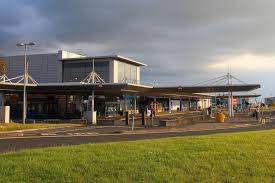Belfast International Airport: Key Developments and Importance

Introduction
Belfast International Airport, Northern Ireland’s busiest airport, plays a crucial role in providing access to global destinations and boosting the region’s economy. As international travel continues to recover from the impacts of the COVID-19 pandemic, the airport is poised for significant changes that will shape its future operations and service offerings. The recent developments at the airport highlight its strategic importance in enhancing connectivity and tourism in Northern Ireland.
Main Developments at Belfast International Airport
In the past few months, Belfast International Airport has reported a surge in passenger numbers. According to the latest statistics released by the UK Civil Aviation Authority, the airport saw a remarkable increase of 22% in passenger traffic in the first quarter of 2023 compared to the same period last year. This positive trend reflects both a revival in leisure travel and the increase in business travel, as more companies resume operations and travel schedules.
In response to this growing demand, Belfast International Airport has announced plans to expand its facilities. The airport’s management has confirmed investments in enhanced terminal services, including improved check-in areas, expanded retail and dining options, and upgraded baggage handling systems. These changes aim to streamline passenger experience and meet contemporary travel expectations.
Moreover, the airport is looking to enhance its flight offerings. Recently, several airlines have announced new routes from Belfast International Airport to popular European destinations such as Barcelona and Amsterdam, fostering greater connectivity for local travellers and businesses alike. This move is expected to stimulate economic growth and attract more visitors to Northern Ireland.
The Economic Impact
Belfast International Airport is more than just a travel hub; it is a vital economic engine for the region. The airport supports approximately 3,200 jobs directly and a further 15,000 jobs in the surrounding area, encompassing a range of sectors, including hospitality, retail, and transport. The continued investment in airport infrastructure and services is likely to sustain and enhance this employment landscape.
Conclusion
As Belfast International Airport embarks on its journey of expansion and increased connectivity, the implications for Northern Ireland are significant. Not only is the airport crucial for local economic recovery in the post-pandemic landscape, but it also serves as a gateway for international business and tourism. As more flights, improved facilities, and expanded services come into play, passengers can look forward to a more convenient and enriching travel experience, making Belfast International Airport a key player in the Northern Irish economy for years to come.
You may also like

Bristol Airport: The Future of Travel and Innovations

